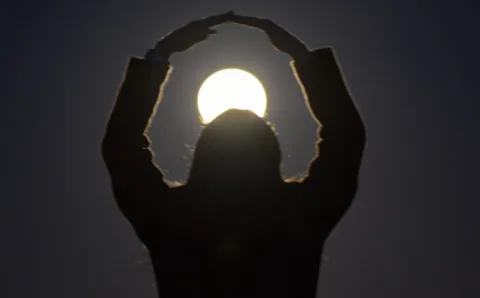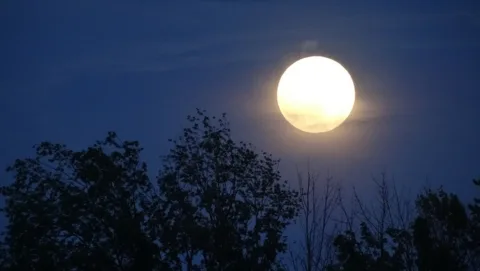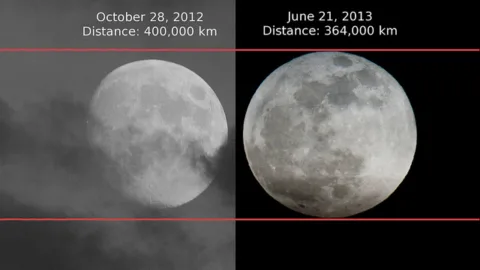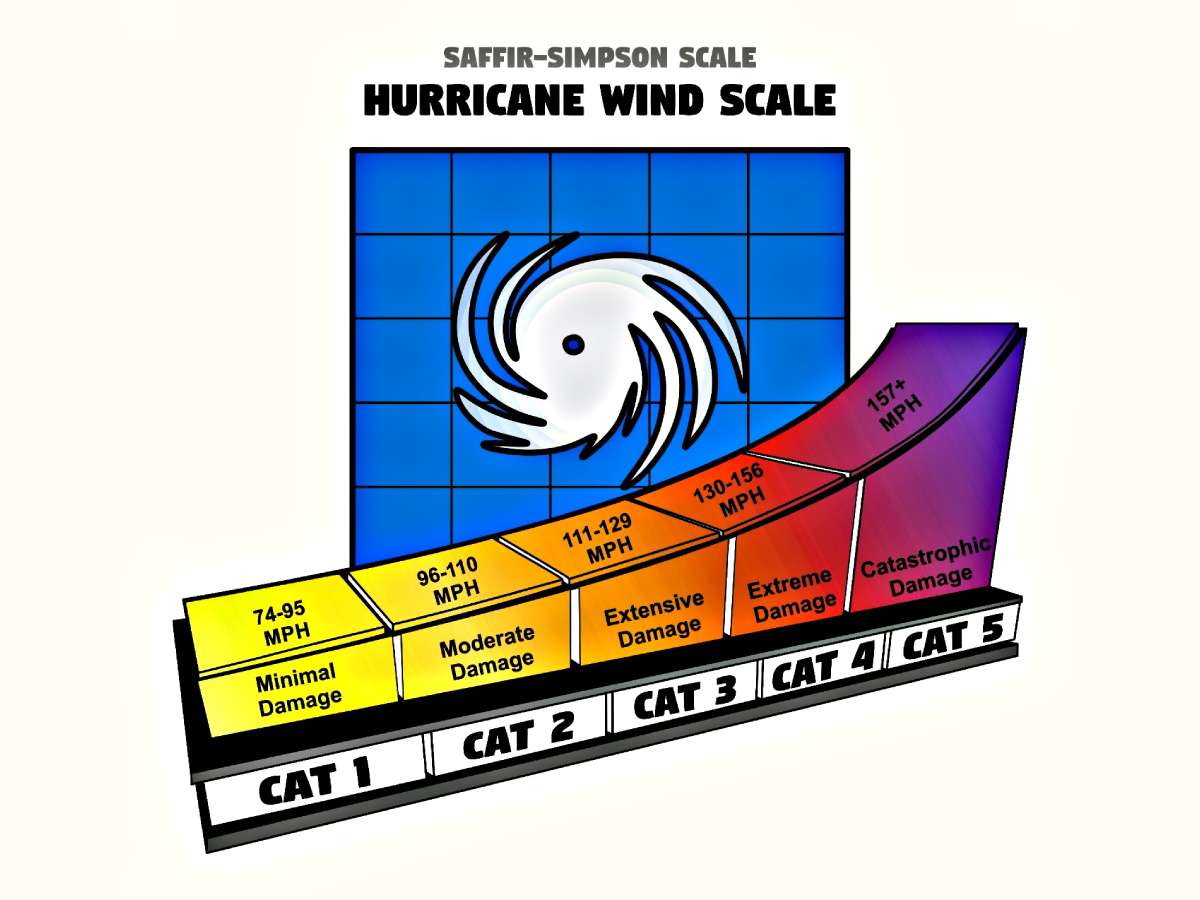Supermoons occur when the full moon or new moon happen during the Moon’s closest approach to Earth on its elliptical orbit.
Interestingly, the word Supermoon isn’t the actual name astronomers have used to describe this incredibly eye-catching phenomenon.
Technically, the term for this astronomical event is perigee-syzygy of the Earth-Moon-Sun system.
Whew, that’s a mouthful, isn’t it?
It’s no wonder astrologer (not astronomer) Richard Nolle coined the much more pop-culture friendly term “Supermoon” in 1979.
While the term is decades-old, the media didn’t really begin to use the word Supermoon until the 2000s.
Matter of fact, most serious astronomers don’t use the word Supermoon, unless they’re talking to individuals outside of their field.
Generally speaking, astronomers call these special moon events perigee moons or lunar perigee.
You can view the date, time, and distance of lunar perigees and apogees for any given year using this Lunar Perigee And Apogee Calculator.
Supermoons Explained
As you now know, the Supermoon may look a bit bigger and brighter because the Moon is closer to Earth than usual.
Here is the definition of what a Supermoon is according to Nolle:
A new or full moon which occurs with the Moon at or near (within 90% of) its closest approach to Earth in a given orbit perigee. In short, Earth, Moon and Sun are all in a line, with Moon in its nearest approach to Earth.
So, what that basically means is the Sun and Moon will be directly opposite of each other.
In other words, the Supermoon can only be seen as a full moon — not a crescent moon or half moon.
When Can You See A Supermoon?
Supermoons occur on a fairly sporadic basis, though they may not always be apparent. This is because a Supermoon may occur during a new Moon cycle, when the Moon is generally invisible to the naked eye. Also, it’s really hard to tell a Supermoon from a typical appearance of the Moon on a cloudy night.
There were 3 Supermoons during the summer of 2014: 1 each in July, August, and September.
These Supermoons will be occurring over the next few years:
- September 27-8, 2015 (This Supermoon will also feature a total lunar eclipse.)
- October 27, 2015
- October 16, 2016
- November 14, 2016
- December 3, 2017
- January 2, 2018
- January 21, 2019
- February 19, 2019
- March 9, 2020
- April 8, 2020
5 Fun Facts About Supermoons
#1 – What’s The Size Difference Of A Regular Moon vs. A Supermoon?
A Supermoon will appear about 14% larger than it would when the Moon is at its apogee, or farthest possible distance from Earth.
#2 – What’s The Difference In The Moon’s Mileage From Earth?
The Moon’s closest possible distance from Earth at perigee is 221,439 miles, versus 252,724 miles at its apogee. The Moon’s mean distance from Earth is 238,855 miles.
#3 – How Much Brighter In The Sky Is The Supermoon?
The Moon appears roughly 25% to 30% brighter at its perigee, as compared to its apogee.
Astronomers will measure this light difference in terms of magnitude — meaning it’s about 0.25 magnitude brighter at perigee than apogee.
#4 – What’s The Supermoon’s Affect On Tides?
The Moon’s effects on Earth in terms of gravitational pull are substantial, in general. But the differences in effect between a perigean Moon and an apogean Moon on the tides are relatively small.
In terms of the tides, there is normally a difference of just a few inches to perhaps 1 foot during a Supermoon versus the height of the tides when the Moon is at its typical distance from Earth.
#5 – Are Most Big Moon Photos Fake Or Enhanced?
 In a word, yes. Inevitably, you’re going to see a lot of photos on social media during the appearance of a Supermoon that show the Moon looking extraordinary in size. While these images are quite artsy and whimsical, there are a lot of Internet hooligans passing around Photoshopped images of the Moon that simply aren’t real.
In a word, yes. Inevitably, you’re going to see a lot of photos on social media during the appearance of a Supermoon that show the Moon looking extraordinary in size. While these images are quite artsy and whimsical, there are a lot of Internet hooligans passing around Photoshopped images of the Moon that simply aren’t real.
There are some great (and real) images of the Moon when it’s near the Earth’s horizon, and in these photos the Moon will appear slightly larger than average. This is because of the so-called “moon illusion,” when the lunar disc appears slightly larger near the horizon than it will when it looks to be up in the sky.
There is a type of lens called a telephoto lens that photographers sometimes use to enhance the apparent size of a distant object — such as the Moon. Of course, while these images are quite beautiful, they distort the true apparent size of the Moon as compared to how it looks with the naked eye.







